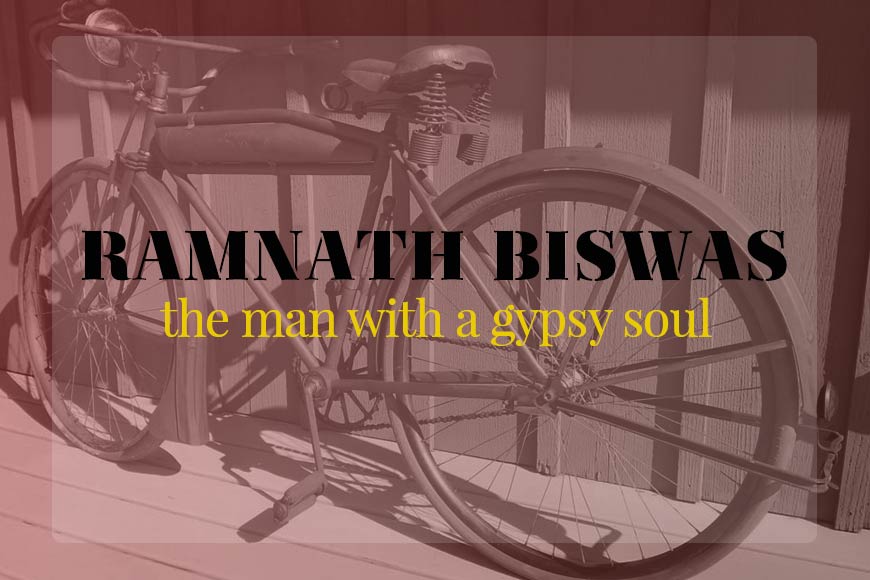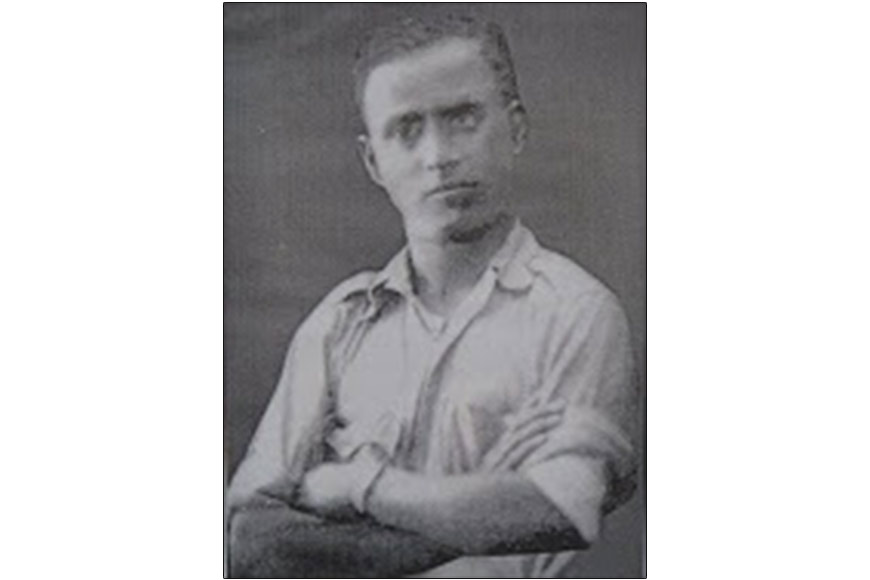Ramnath Biswas, the man with a gypsy soul

The beginning of the 20th century was an epoch-making period. Ominous clouds of mistrust, conflict and war loomed large over the world and by 1914, war became imminent between the Allied Powers and Central Powers. World War I began. Britain was part of the Allied Forces and India being a British colony, was thrust to participate in the battle. Indians were trained in modern warfare. A Bengali platoon was formed where many brave, idealistic youths enlisted their names in the platoon. A lean Bengali youth of average height also applied. The British military recruiters had a good laugh at the scrawny looking chap’s daring attempt. But Ramanath Biswas was undeterred. He had immense faith in his inner strength and was willing to take up any challenge to prove it.
 Ramnath Biswas
Ramnath Biswas
Biswas hailed from Sylhet, the then Bangladesh. He lost his father early in life and had to quit studies when he was in the eighth standard. He took up odd jobs to support his family. This was the beginning of the 20th century and the Swadeshi movement was gaining ground following the Partition of Bengal. During this time Biswas secretly joined the Anushilan Samiti. However, his association with the revolutionary group became public and he was expelled from his job. Meanwhile, the First World War broke out.
Ramnath, the boy with a gypsy soul yearned for adventure. He joined the Bengali Paltan and went to the war in Mesopotamia. However, he fell ill and was discharged and sent home. In 1924, he took up a job with the British Navy and moved to British Malaya. Biswas had mastered bicycling in his teens and was very enthusiastic about travelling on his bicycle.
Ramnath, the boy with a gypsy soul yearned for adventure. He joined the Bengali Paltan and went to the war in Mesopotamia. However, he fell ill and was discharged and sent home. In 1924, he took up a job with the British Navy and moved to British Malaya. Biswas had mastered bicycling in his teens and was very enthusiastic about travelling on his bicycle. It became his constant companion as he explored uncharted territories and finally decided to explore the world on his bicycle. In 1931, Ramnath embarked on his first world tour on a bicycle. On July 7, 1931, he started his journey from Queen Street in Singapore. At the time of his journey, he had a pair of slippers, two wrappers, a bicycle and a box containing tools for bicycle repair.
He cycled through many South and East Asian countries including Malaya, Siam, Indo-China, China, Korea and Japan. He returned home and then undertook two more trips -- one in 1934 and the next in 1938. In 1934, he travelled through Afghanistan, Persia, Iraq, Syria, Lebanon, Turkey, Bulgaria, Yugoslavia, Hungary, Austria, Czechoslovakia, Germany, the Netherlands, Belgium, France and reached England. He toured Scotland as well. The long arduous journey took toll on his health. In 1936, he returned from London in a ship via Port Said and reached Mumbai. After regaining his health and fitness, he travelled to Santiniketan to meet Rabindranath Tagore.
Ramnath Biswas hailed from Sylhet, the then Bangladesh. He lost his father early in life and had to quit studies when he was in the eighth standard. He took up odd jobs to support his family. This was the beginning of the 20th century and the Swadeshi movement was gaining ground following the Partition of Bengal. During this time Biswas secretly joined the Anushilan Samiti.
In 1938, he embarked on his third world tour. This time he travelled to Africa. From Bombay, he travelled to Mombasa in a ship. He started on his bicycle from Mombasa and hurtled through Kenya, Uganda, Nyasaland, Rhodesia and reached South Africa. Once, while he was travelling through South Africa, he witnessed the racial segregation practiced by the Whites. There was a large presence of Indian community but even these members looked down on the natives. This system of institutionalized apartheid deeply impacted Biswas. Once he took two poor natives with him to venture into the deep forest area. Ramnath was transfixed to see the pristine wild beauty and was humbled by the vast bounty of nature. On his way back, he put his hands in his pockets casually and felt a few crisp pound bills shoved inside. He immediately took them out and donated it to the two men who had accompanied him. Both the men were shocked and wondered if their guest had lost his marbles.
Biswas finally settled down and took to writing travelogues. After Partition, Biswas chose to stay back in East Pakistan. However, when he wanted to publish a book on his travelogues, he couldn't find a publisher. He himself founded a publication house by the name of Paryatak Prakashana and began to publish his books. After a few years he left East Pakistan and settled in Kolkata and began to write travelogues in Anandabazar Patrika. He wrote many informative and interesting books based on his travels. He breathed his last in 1955.










